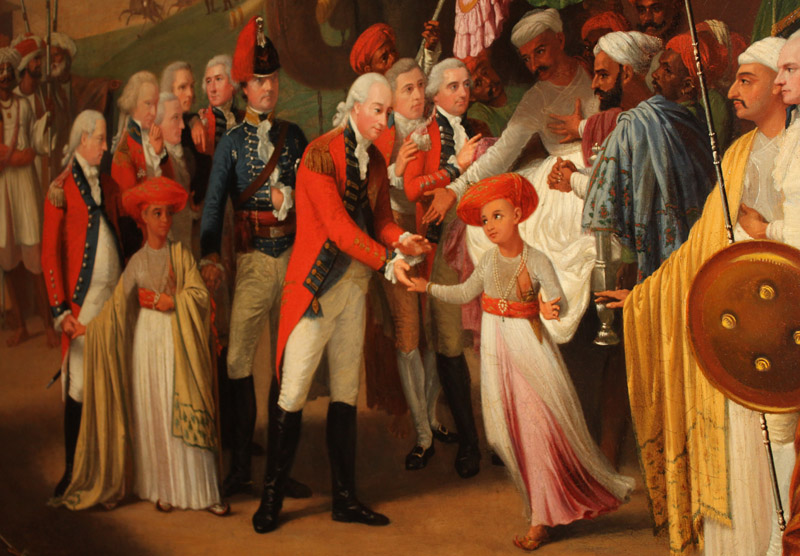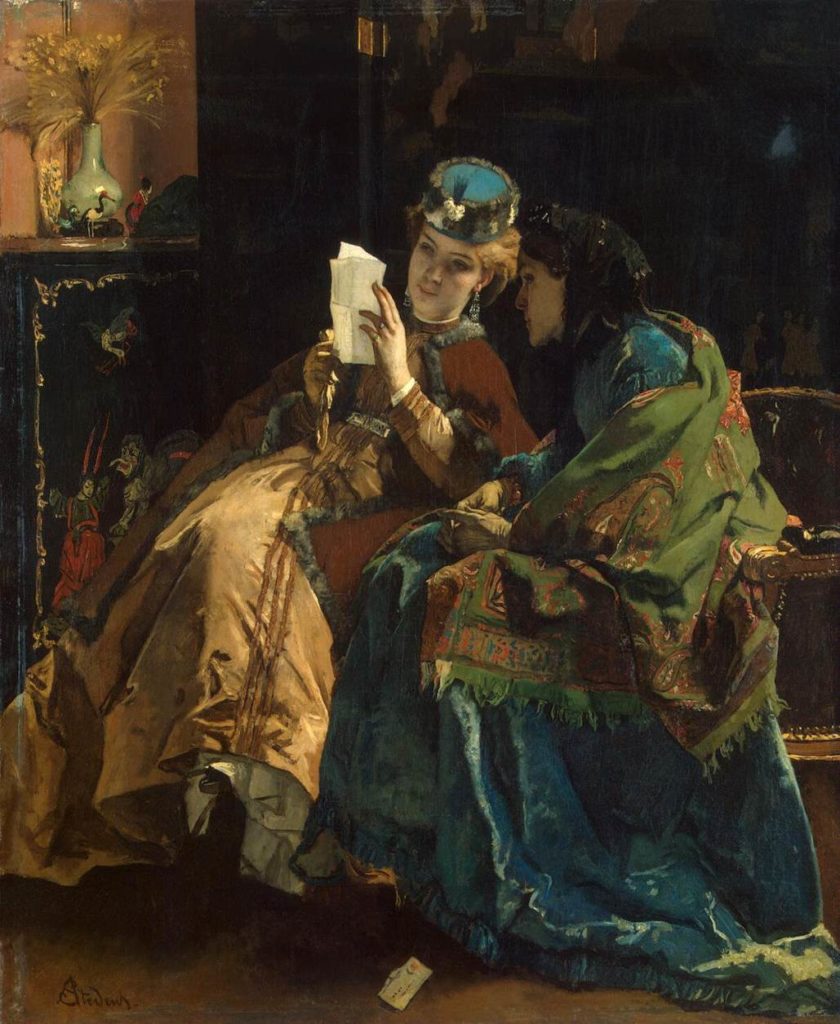
Shawls are used in order to keep warm, to complement a costume, and for symbolic reasons. The Kashmir shawl is a type of shawl distinctive for its Kashmiri weave, and traditionally made of pashmina wool, Known for its warmth, light weight and characteristic buta design.
Kashmir shawl was originally used by Mughal royalty and nobility. In the late 18th century, it arrived in Europe, where its use by Queen Victoria and Empress Joséphine popularised it as a symbol of exotic luxury and status. It became a toponym for the Kashmir region itself (as cashmere), inspiring mass-produced imitation industries in India and Europe.
Some of the Paintings shows the Royality of Pashmina shawls.
“SURRENDER OF TIPU SULTAN”
The most interesting painting to come out of early British India. More than five Embroidered Kashmiri Shawls can be clearly seen here draped around important men.
Shawls were customary to Indian Royalties and often designed to depict rank and authority.

“AFTER THE BALL”
A painitng by Alfred Stevens with a glimpse of the life of fashionable Parisian women. Meticulous attention to contemporary shawl and decor elicited analogies to seventeenth-century Dutch and Flemish art.
Shawls often found themselves in trousseau of wealthy European women. They were treasured gifts exchanged between royalties.
